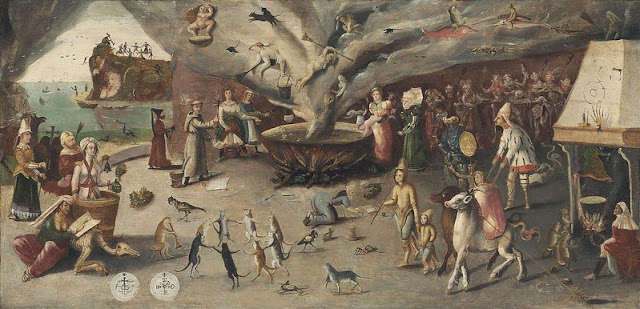Lady Eleanor Smith (1902-1945) was one of the “Bright Young Things,” the name given to the group of aristocrats and socialites who enlivened 1920s London society. The Bohemian, eccentric Lady Eleanor had a short, but busy career as a society journalist, novelist, and circus publicist.
Lady Eleanor was a great admirer of the prima ballerina Anna Pavlova, who stars--sort of--in this passage from Smith’s 1939 memoir, “Life’s a Circus.” If Smith’s story is to be believed, the legendary dancer made a brief, posthumous return to the stage, during a 1933 rehearsal of “Ballerina,” a play based on one of Smith’s novels.
Once, at a dress rehearsal at the Scala Theatre, something happened that made a profound impression upon my mind. If I had been the only person to see what I saw, I should be willing to dismiss the whole matter as an illusion. But I was not alone; Pat was with me and saw it too; Charles Landstone, our levelheaded business manager, was another witness; so was Hank; so was Hank’s manager, Ralph Glover.It was about three o’clock in the morning, and the auditorium was dark and empty. The five of us sat together in the dress circle watching the final rehearsal of the “Snowbird” ballet. Pat had purposely put on his understudy, Freddy Franklin, because he wanted to watch, in complete concentration, Frances’ [actress Frances Doble] efforts as a dancer.
I have explained before that watching Pavlova from the side of the stage had inspired me to write “Ballerina.” Had I not watched Pavlova so closely that day at Golders Green, the book would never have been written, although my heroine’s private life was, of course, pure fiction, borrowing nothing at all from the greatest ballerina of all. At the same time, I think that Pavlova had either directly or indirectly inspired us all, and Pavlova was dead. She had certainly inspired Pat, Frances, and myself.
The stage revolved to show a woodland glade with nymphs in white tartalan grouped in a traditional entrance. Previously we had see Varsovina haggard and dejected in her dressing room, wrapped, shivering, in her shabby grey dressing gown. Now, as we watched, a slight figure walked onto the stage. A figure snow white in a fluffy tutu, its head bound with swans’ plumage. The figure paused, crossing itself. It seemed to me that Frances had grown much smaller.
Then, as it glided into the spotlight, I caught my breath.
For the figure was not that of Frances. It had assumed the form of Anna Pavlova.
Pat gripped my hand until I thought he would break it. I looked at him; he was ice pale, and there was sweat on his face.
He muttered:
“This is uncanny…it’s awful…What have we done? Oh, God--why did we ever bring up the past?”
The white form on the stage stood effortlessly upon one pointe; it pirouetted three times--a thing Frances could not do--and drifted like swansdown into Borek’s arms as the curtain fell. I looked again at my companions. They were white and dazed.
Somebody mumbled:
“We’re all very tired…Don’t let’s imagine things…”
Somebody else said:
“We can’t all have seen--what we saw…”
Pat and I ran to the pass door.
We were afraid.
Frances stood there on the stage and said to Pat in a perplexed, mechanical voice:
“Pat, I’m sorry…Let’s take it again.”
“Take it again? Why?”
“I couldn’t dance. I must be awfully tired. My mind suddenly seemed to go blank. Will someone get me a glass of water?”
Pat gave me a warning look, and we said nothing at the time.
Later he affirmed:
“We can’t deny it. For a moment, that particular spirit from the past took possession of Frances’ mind and body.”
I was silent, for at the time it occurred to me that what we had seen was an unfavorable omen.
Later on I mentioned this to Lydia Kyasht, who was playing with great charm in the prologue of our play.
Lydia grew white and said:
“I saw what you all saw. I was in front--hidden away in the pit. I saw it too…”


















